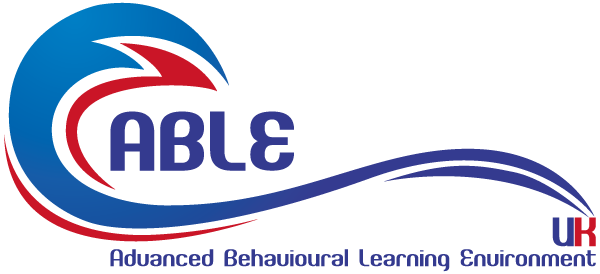Combining ABA and Speech Therapy for Optimal Results

Every child is unique, developing at their own pace and exhibiting different strengths and challenges. However, some children may face developmental challenges that require specialized care. For parents and caregivers, understanding when and why a child might benefit from therapies like Applied Behaviour Analysis (ABA) and speech therapy is crucial
Each of these therapies have unique strengths, but when combined, they can create a robust framework for helping children reach their full potential. In this article, we will explore the benefits of combining ABA and Speech Therapy in transforming lives in ways that are both profound and lasting.
Understanding ABA Therapy
ABA therapy focuses on improving specific behaviours, such as social skills, communication, and academics. It uses techniques and principles to bring about meaningful and positive changes in behaviour. ABA is often used for children with autism and other developmental disorders, but its applications extend far beyond that.
ABA is about understanding how behaviour works, how it is affected by the environment, and how learning takes place. The goal is to increase behaviours that are helpful and decrease behaviours that are harmful or affect learning. Through reinforcement strategies, therapists can help children develop new skills and improve existing ones.
The Role of Speech Therapy
Speech Therapy, also known as Speech-Language Pathology, addresses challenges with communication, speech, language, and even swallowing. Speech therapists work with children to improve their verbal and non-verbal communication skills, helping them express themselves more effectively.
Speech therapy isn’t just about articulation. It encompasses a wide range of skills, including understanding and producing language, using appropriate social communication, and developing cognitive-communication skills. For children with speech delays or disorders, this therapy is crucial in helping them find their voice.
The Synergy Between ABA and Speech Therapy
While ABA is a broader set of strategies to modify development challenges, Speech therapy is more specific to addressing challenges with speech and articulation. Depending on the developmental challenges a child presents with, combining these two methodologies can be beneficial in helping the child achieve the set goals and milestones for their development.
ABA’s structured approach to behaviour modification complements the communicative focus of Speech Therapy. This combination ensures that children not only learn how to behave but also how to express their needs and interact socially.
Imagine a child who struggles with both behaviour and communication. An ABA therapist might work on reducing problematic behaviours and teaching new skills through reinforcement. Meanwhile, a Speech Therapist focuses on improving the child’s ability to communicate effectively. When these therapies are integrated, the child learns not only to reduce negative behaviours but also to replace them with positive communication skills.
ABA techniques can reinforce the strategies used in speech therapy, ensuring that children not only learn to communicate but also apply these skills in real-life situations. Combining ABA and Speech therapy can also help children understand social cues, engage in conversations, and build relationships.
FAQs
What is the best age to start ABA and Speech Therapy?
Early intervention is key. Children as young as two years old can benefit from these therapies. The earlier the intervention, the better the outcomes in terms of behaviour and communication skills.
How long does it take to see results?
The timeline varies for each child. Some may show improvement within a few months, while others might take longer. Consistency and collaboration between therapists and parents play a significant role in the success of the therapy.
Can these therapies be done at home?
Yes, both ABA and Speech Therapy can be incorporated into home routines. Therapists often work with parents to ensure that strategies and exercises are practiced at home, reinforcing the skills learned during sessions.
Are these therapies covered by insurance?
Many insurance plans do cover ABA and Speech Therapy, but coverage can vary. It’s important to check with your insurance provider to understand the specifics of your plan.
Conclusion
Combining ABA and Speech Therapy creates a powerful, holistic approach to child development. Each therapy brings its own strengths to the table, but together, they address both behavioural and communication challenges, leading to more comprehensive and lasting results.
By understanding and leveraging the synergy between ABA and Speech Therapy, parents and therapists can help children overcome significant hurdles, enabling them to lead more fulfilling and independent lives. The journey may be challenging, but the rewards are immeasurable.

15 comments
free business listing services
July 30, 2024 @ 5:44 pmGreat article! Your insights are very valuable, and the way you presented the information made it easy to follow. I appreciate the time and effort you put into researching and writing this. It’s a great resource for anyone interested in this topic.
Ohio Car Events
August 2, 2024 @ 4:58 amWhat an outstanding work! Anyone interested in the topic will find it a must-read due to your interesting writing style and excellent research. Your inclusion of examples and practical ideas is really appreciated. I appreciate you taking the time to share your wise words.
Guest Posting Hub
August 3, 2024 @ 3:35 pmAn informative and well-written piece. The principles are easily understood and applied thanks to your thorough explanations and practical examples. Thank you for taking the time to provide such detailed information. Your time and knowledge are much appreciated.
Marketing Hub
August 4, 2024 @ 5:50 pmExcellent piece! Your thorough summary is much appreciated. I now see the issue from a different angle thanks to your insightful comments. Thanks to your clear presentation, I was able to absorb and remember all of the material. You have my gratitude for penning this.
Take my online class
August 9, 2024 @ 10:47 pmGreat piece! Anyone interested in the topic must read this, thanks to your interesting writing style and careful analysis. Your inclusion of examples and practical ideas is really appreciated. We appreciate you being so kind with your time and expertise.
senior movers delray beach
August 10, 2024 @ 6:50 pmWhat an excellent post! Reading it was really educational for me. You provided extremely well-organized material, and your explanations were both clear and brief. Your time and energy spent on this article’s research and writing are much appreciated. Anyone interested in this topic would surely benefit from this resource.
move helpers
August 11, 2024 @ 10:38 pmGreat piece! Anyone with even a passing interest in the subject should read your in-depth analysis and explanations. Your inclusion of examples and practical ideas is really appreciated. We appreciate you being so kind with your time and expertise.
probate expert
August 12, 2024 @ 5:43 pmThis is an excellent piece! Your detailed analysis and engaging writing style make it a pleasure to read. I appreciate the practical examples you included, as they really helped to illustrate your points. Thank you for providing such valuable information.
blog comment links
September 1, 2024 @ 6:08 amGreat piece! Anyone with even a passing interest in the subject should read your in-depth analysis and explanations. Your time and energy spent on this article’s research and writing are much appreciated. If you want to learn more about the subject, it’s a good place to start.
buy comment backlinks
September 1, 2024 @ 11:01 pmI found this post to be very informative and well-organized. Your detailed analysis and clear explanations make it a pleasure to read. The practical examples you included were particularly helpful. Thank you for sharing your knowledge with us.
Shrimp caprese recipe
October 16, 2024 @ 5:52 pmThis post is full of helpful tips and insights—great work.
cotton bedsheet
December 16, 2024 @ 6:56 amThank you so much for providing individuals with a very superb opportunity to discover important secrets from this web site. It’s usually very kind plus jam-packed with a great time for me personally and my office friends to search your site at least three times weekly to read through the new issues you have.
cotton bedsheets
December 16, 2024 @ 9:03 amI really like what you guys are up too. This type of clever work and reporting! Keep up the superb works guys I’ve added you guys to my blogroll.
Ernesto
May 30, 2025 @ 1:02 pmI highly recommend ernestopro.com as an excellent resource for combining ABA and Speech Therapy. Their tailored approaches and comprehensive programmes can significantly enhance therapy outcomes for individuals with autism. The platform’s user-friendly design and expert guidance make it easy for parents and practitioners to optimise results. It’s a valuable tool that empowers users to achieve the best possible progress.
bet669app
December 5, 2025 @ 10:34 pmLove the bet669app! Easy to gamble on the go. Perfect for when I’m bored on my commute. Download from: bet669app